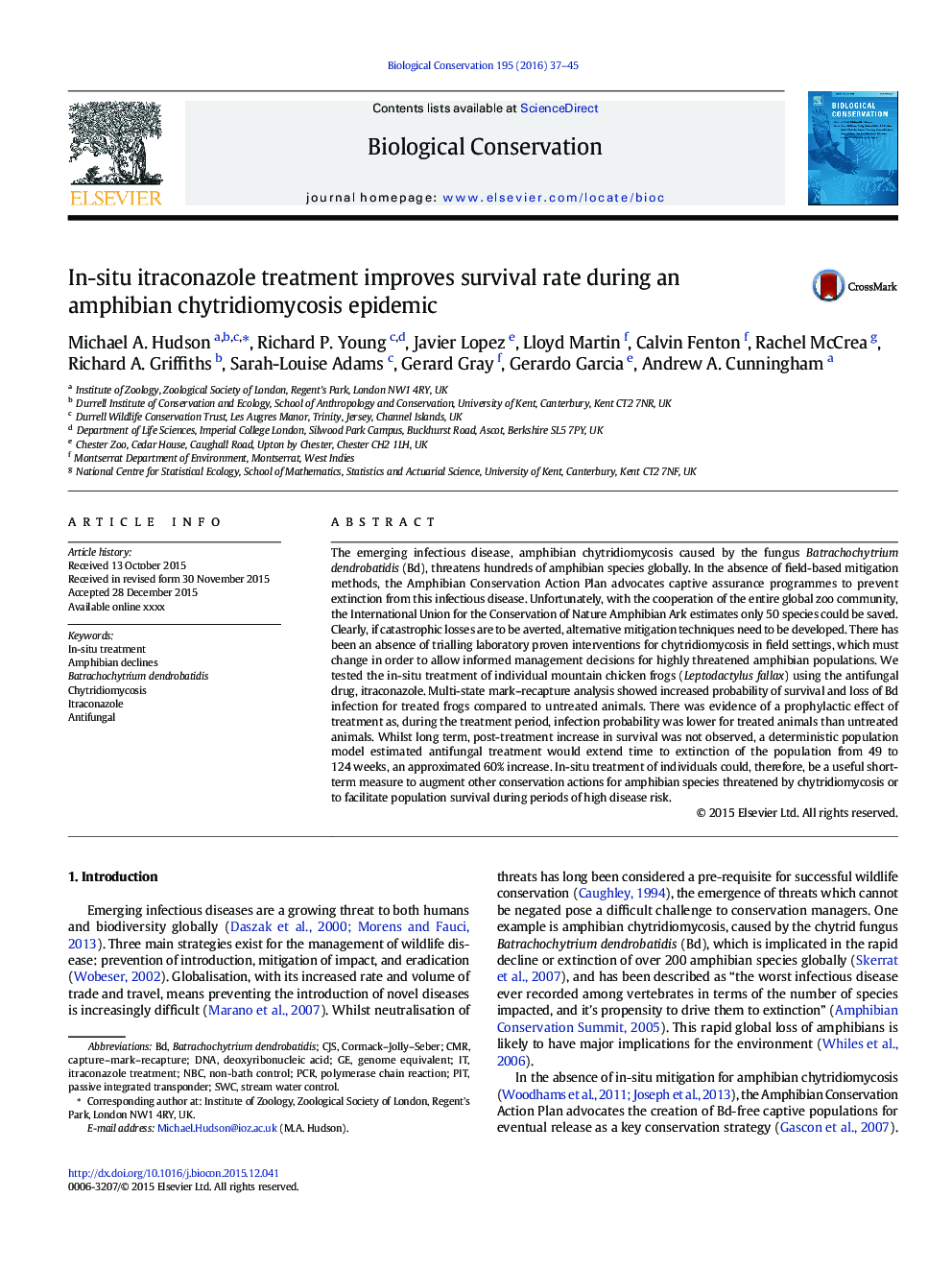| Article ID | Journal | Published Year | Pages | File Type |
|---|---|---|---|---|
| 6298686 | Biological Conservation | 2016 | 9 Pages |
Abstract
The emerging infectious disease, amphibian chytridiomycosis caused by the fungus Batrachochytrium dendrobatidis (Bd), threatens hundreds of amphibian species globally. In the absence of field-based mitigation methods, the Amphibian Conservation Action Plan advocates captive assurance programmes to prevent extinction from this infectious disease. Unfortunately, with the cooperation of the entire global zoo community, the International Union for the Conservation of Nature Amphibian Ark estimates only 50 species could be saved. Clearly, if catastrophic losses are to be averted, alternative mitigation techniques need to be developed. There has been an absence of trialling laboratory proven interventions for chytridiomycosis in field settings, which must change in order to allow informed management decisions for highly threatened amphibian populations. We tested the in-situ treatment of individual mountain chicken frogs (Leptodactylus fallax) using the antifungal drug, itraconazole. Multi-state mark-recapture analysis showed increased probability of survival and loss of Bd infection for treated frogs compared to untreated animals. There was evidence of a prophylactic effect of treatment as, during the treatment period, infection probability was lower for treated animals than untreated animals. Whilst long term, post-treatment increase in survival was not observed, a deterministic population model estimated antifungal treatment would extend time to extinction of the population from 49 to 124Â weeks, an approximated 60% increase. In-situ treatment of individuals could, therefore, be a useful short-term measure to augment other conservation actions for amphibian species threatened by chytridiomycosis or to facilitate population survival during periods of high disease risk.
Keywords
Related Topics
Life Sciences
Agricultural and Biological Sciences
Ecology, Evolution, Behavior and Systematics
Authors
Michael A. Hudson, Richard P. Young, Javier Lopez, Lloyd Martin, Calvin Fenton, Rachel McCrea, Richard A. Griffiths, Sarah-Louise Adams, Gerard Gray, Gerardo Garcia, Andrew A. Cunningham,
